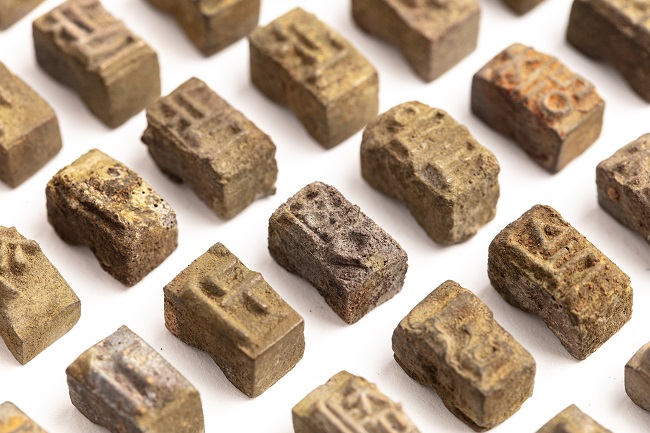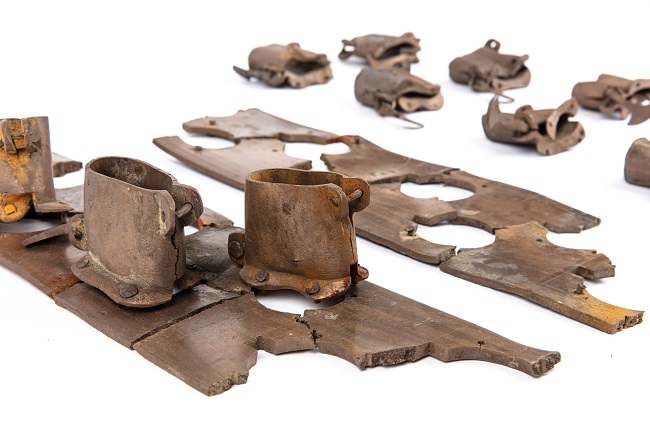
This photo, provided by the Cultural Heritage Administration, shows metal type blocks dating back to the mid-15th century, excavated in Insa-dong, central Seoul.
SEOUL, June 29 (Korea Bizwire) — About 1,600 movable metal type blocks from the 15th and 16th centuries, including what are believed to be the oldest extant Korean-letter type pieces, have been found in downtown Seoul, heritage authorities said Tuesday.
The Cultural Heritage Administration (CHA) also announced the discovery of copper items presumed to be parts of astronomical and water clocks produced during the early Joseon Dynasty (1392-1910).
The trove of scientific treasures was unearthed early this month from the remains of a 16th-century building in Insa-dong, known to be a commercial and cultural center of the capital during the Joseon era.
The metal type blocks — about 1,000 of Chinese letters and about 600 of Korean letters — include those believed to have been produced in the mid-1400s.
“The type blocks are various in size and shape. Most of them were found intact, but some were melted in a fire and stuck together,” an official of the heritage agency said.
It is the first time that a bunch of diverse metal type pieces from the early Joseon era have been unearthed at once from the same site.
It is known that only about 30 metal type blocks made before the Japanese invasion of Joseon in 1592 remain today. The Korean-letter pieces, presumably dating back to 1455-61, are currently preserved at the National Museum of Korea.
Korea’s “Jikji,” printed in 1377 during the Goryeo Kingdom, is recognized as the world’s oldest extant book printed with movable metal type.

This photo, provided by the Cultural Heritage Administration, shows parts of astronomical and water clocks from the Joseon Dynasty (1392-1910), excavated in Insa-dong, central Seoul.
The newly found type pieces include Chinese characters dating from 1434, 1455 and 1465, and the oldest among the Korean-letter blocks are presumed to have been produced between 1455 and 1461, the CHA said.
Some of Korean characters are based on a specific spelling system used around the time when King Sejong created Hangeul, the Korean alphabet, in 1446.
Among other finds were some of the most precious scientific achievements of the Joseon period.
They include a copper artifact believed to be a component of either of two water clocks, each created in 1438 and 1536 and installed at royal palaces. It is presumed to be a device that caused a ball to roll to mark the hour when the water level rose.
In addition, the agency excavated objects assumed to be parts of a sundial-cum-astronomical clock from the mid-15th century. Records show four such timepieces, called “Ilseongjeongsieui,” were produced in 1437, but none of them remain today.
Also discovered were eight firearms, 50-60 centimeters long, believed to be made in 1583 and 1588, and a copper bell produced in 1535.
All the relics except the type blocks were found in pieces, the agency said.
“All the artifacts seem to have been buried together after 1588 and not used thereafter. They are crucial materials that will contribute to our understanding of the printing and science technology of the early Joseon era,” the official said.
(Yonhap)






